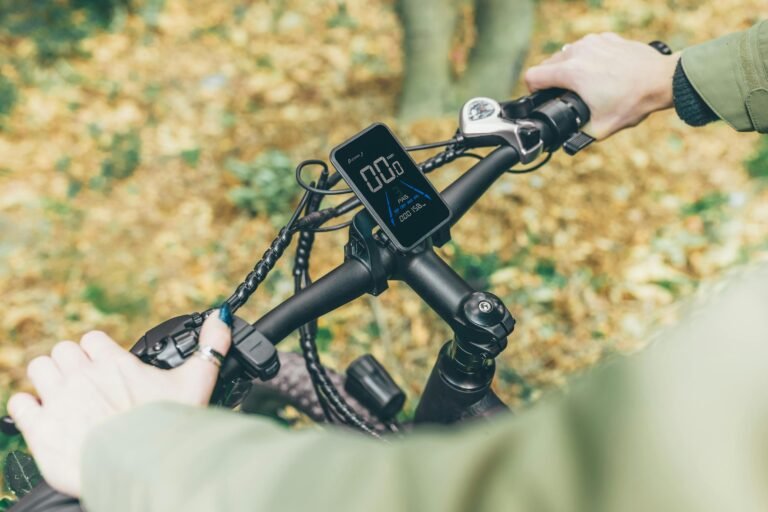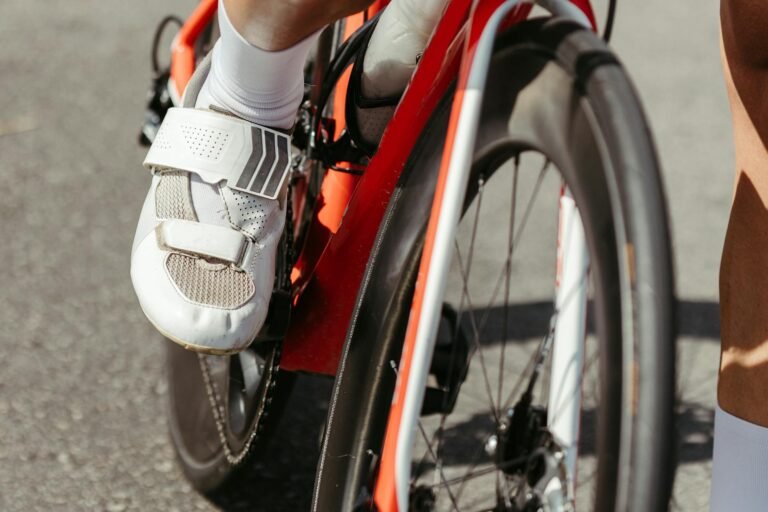Smart Bike Trainers: 2024 Best Picks with Features and Benefits
Ready to transform your indoor cycling experience? Smart bike trainers are revolutionizing the way we train, offering immersive features like virtual rides, real-time metrics, and app integration. Whether you’re preparing for your next race or looking for an efficient way to stay fit, these advanced tools are a game-changer. With brands like Wahoo and Tacx leading the pack, you might wonder: what makes a smart bike trainer worth the investment? Let’s dive into the world of smart bike trainers to explore their features, benefits, and top picks for 2024.
Smart Bike Trainers: Transforming Indoor Cycling for Performance and Pleasure
Smart bike trainers are the future of indoor cycling. Unlike traditional trainers, these devices don’t just hold your bike in place—they create an interactive training experience by simulating real-world conditions like hills, descents, and even wind resistance. They also measure metrics like power, speed, and cadence, giving you a full picture of your performance. In short, they’re part exercise equipment, part tech experience.
Key Technological Features
The standout feature of smart bike trainers is their ability to measure power output (in watts) with incredible accuracy. This makes tracking your effort much more precise compared to the “guesswork” of traditional trainers.
Many smart trainers use electromagnetic resistance that adjusts automatically during your workout, so if your virtual ride on an app like Zwift takes you up a hill, the resistance increases.
Connectivity is another big win. Smart trainers typically use Bluetooth and ANT+ to sync with training apps, heart rate monitors, and even GPS devices.
Some models also include cadence sensors and auto-calibration for even more detailed feedback. It’s like having a personal cycling coach—minus the yelling.
Difference from Traditional Bike Trainers
The main difference between smart trainers and their traditional counterparts is interactivity. Traditional trainers offer a static resistance level that you manually adjust. They’re great for basic spinning but lack the immersive, data-driven experience of smart trainers.

Imagine pedaling through a virtual Paris or racing a friend across a simulated mountain—traditional trainers can’t do that.
Smart trainers also give you live feedback. With traditional models, you might think you’re working hard, but without precise metrics like power and cadence, it’s hard to tell. With a smart trainer, you know exactly how much effort you’re putting in—and there’s no faking it!
How They Connect with Training Apps
Connecting a smart trainer to training apps like Zwift, TrainerRoad, or Wahoo SYSTM is a breeze. Most trainers pair via Bluetooth or ANT+ in just a few taps. Once connected, these apps turn your workouts into an adventure, offering virtual rides, structured training plans, or even competitive races. Just make sure your Wi-Fi is solid, or you might find yourself “stuck” mid-climb! Just kidding but really a strong Wi-Fi signal is not an option.
Smart bike trainers bring precision, realism, and motivation to indoor cycling. Whether you’re training for a race or just trying to stay fit, they make every pedal stroke count.
Types of Smart Bike Trainers
If you’re considering a smart bike trainer, it helps to know the different types—and trust me, not all are created equal. Each has its own quirks, advantages, and things you’ll wish someone told you before you bought it. Let’s break it down:
Direct Drive Trainers
Direct drive trainers are the high-end option, and for good reason. With these, you remove your bike’s rear wheel and attach the trainer directly to your bike’s drivetrain. These trainers are incredibly quiet, too—your neighbors will thank you. But they’re pricey, usually starting around $700. Also, setup can be intimidating at first. Still, if precision and performance are your top priorities, this is the way to go.
Wheel-On Smart Trainers
Wheel-on trainers are the more budget-friendly option. You leave your bike’s rear wheel on and clamp it onto the trainer. While they’re easier to set up and generally cheaper (think $300-$500), they aren’t as accurate.
There’s also a bit more noise—especially if you’re sprinting hard.
Get a trainer-specific tire to save your regular ones.
Integrated Smart Bikes
Now, integrated smart bikes are like the Tesla of indoor training. These are standalone machines that don’t require your bike at all. They come with everything—power meters, adjustable geometry, and built-in screens.
The ride feel is incredible, and they’re dead quiet. But let’s be real: they cost a small fortune (usually $2,000 or more). They also take up more space, so if you’re in a tiny apartment, this might not be practical.
Compatibility Considerations
Here’s the thing: not all trainers play nicely with all bikes. Direct drive models, for instance, might require specific cassettes, while wheel-on trainers can struggle with thru-axle setups.
Before buying, check your bike’s specs and ensure everything will fit. And don’t forget to check app compatibility—most trainers work with apps like Zwift or TrainerRoad, but always double-check.
So, which one’s for you? If you’re just dabbling, start with a wheel-on trainer. Serious about performance? Go direct drive. And if you’ve got the budget and space, an integrated smart bike might be your dream ride. If you’re really traditional and love the outdoors check out my article on the best mountain bikes here.

Top Features to Look for in a Smart Bike Trainer
Investing in a smart bike trainer is exciting, but it can feel overwhelming with all the options out there. From high-tech features to practical considerations, knowing what to prioritize can make all the difference. Let’s break it down:
Resistance Technology
Resistance technology is the heart of any smart trainer. Most high-end trainers use electromagnetic resistance, which is not only incredibly smooth but also adjusts automatically based on your virtual ride or training session. This means when you hit a steep hill in Zwift, you’ll feel it in your legs. Cheaper models might use fluid or mechanical resistance, which works fine but can feel less realistic. If you’re after precision and that “real road” sensation, electromagnetic is the way to go.
Connectivity Options
A smart trainer without good connectivity is like a smartphone without Wi-Fi. Look for trainers that support Bluetooth and ANT+, which are standard for connecting to training apps like Zwift, TrainerRoad, and Wahoo SYSTM.
Bonus points if the trainer can connect to multiple devices at once.
Noise Levels
Let’s be real—nobody wants to sound like they’re operating a jet engine while cycling indoors. Direct drive trainers are usually the quietest, perfect for early-morning sessions without waking the family. Wheel-on trainers, while cheaper, can get a bit noisy, especially during intense sprints. Always check the noise rating before buying; your ears (and neighbors) will thank you.
Portability and Storage
Not everyone has a dedicated pain cave. If you’re short on space, consider how portable and compact the trainer is. Some models fold up nicely and can be stashed in a closet, while others are more cumbersome. I keep my trainer in the garage and pull out a car to let it rip.
Price Range and Value Proposition
Smart trainers range from $300 to over $2,000. The key is finding the right balance of features for your needs. If you’re new to cycling, a mid-range wheel-on trainer might be perfect.
But if you’re a data junkie or competitive cyclist, investing in a high-end direct drive model will pay off. Always weigh the price against features like resistance, accuracy, and connectivity to ensure you’re getting the best bang for your buck.
When choosing a smart bike trainer, think about what matters most to you—whether it’s realism, portability, or price. The right trainer can make indoor cycling fun and exciting!
Best Smart Bike Trainer Brands in 2024
Choosing a smart bike trainer is like picking a new bike: there are tons of options, and each has its pros and cons. In 2024, some brands stand out for their performance, features, and value. Let’s dive into the top contenders and what they bring to the table.
The Wahoo KICKR is a favorite among serious cyclists, and it’s easy to see why. Known for its durability and precision, the KICKR series offers power accuracy within +/- 1% and a seamless ride feel, thanks to its heavy flywheel and electromagnetic resistance. It’s also super quiet, which is a huge plus for apartment dwellers.
Wahoo KICKR Pros
Wahoo KICKR Cons
Tacx Neo Smart Trainers
Tacx Neo trainers are known for their cutting-edge technology, like the ability to simulate road surfaces. They’re direct drive trainers with a power accuracy of +/- 1% and are among the quietest on the market. The Neo 2T, in particular, shines with its unmatched performance and features.
Tacx Neo Pros
Tacx Neo Cons
Elite Direto trainers strike a nice balance between affordability and performance. With a power accuracy of +/- 1.5%, they’re great for most cyclists, and the built-in power meter is a standout feature at this price point. The Direto XR is a popular choice for mid-level to advanced riders.
Elite Pros
Elite Cons
Saris Smart Trainers
Saris offers reliable trainers at a range of price points. The Saris H3 is their flagship direct drive trainer, with power accuracy of +/- 2% and a smooth ride feel. While it doesn’t have as many bells and whistles as competitors, it gets the job done without breaking the bank.
Saris Smart Pros
Saris Smart Cons
Comparative Analysis
If you’re after cutting-edge features and budget isn’t an issue, Tacx Neo leads the pack. Wahoo KICKR strikes the perfect balance of performance and reliability, ideal for serious riders. Elite Direto offers great value without sacrificing too much accuracy, while Saris is the go-to for affordability and ease of use.
Integration with Training Platforms
One of the best features of smart trainers is their seamless integration with training platforms. Apps like Zwift, TrainerRoad, and Wahoo SYSTM connect directly to your trainer, creating a fully interactive experience.
Training and Performance Tracking
Smart bike trainers aren’t just about pedaling indoors—they’re powerful tools for improving your fitness and tracking your progress.
Zwift and Virtual Cycling Experiences
Zwift is a game-changer (literally) for indoor cycling. It turns your workouts into virtual adventures where you can ride through places like Watopia, London, or Paris.

Price Points and Performance Metrics
- Wahoo KICKR Series: $1,200–$1,600; top-tier performance and durability
- Tacx Neo Trainers: $1,400–$1,800; most advanced features and realism
- Elite Direto Trainers: $900–$1,100; best value for mid-range users
- Saris H3: $700–$1,000; affordable with solid performance
Each brand has its strengths, so think about your priorities—whether it’s immersive features, precise metrics, or budget-friendly options. The best trainer is the one that fits your goals and keeps you active.
Performance Metrics and Data Tracking
Smart trainers measure critical performance metrics like power (watts), cadence (pedal revolutions per minute), speed, and even heart rate (if you pair a monitor). These metrics provide a clear picture of your fitness and help you identify areas for improvement. Many platforms also track long-term progress.
Structured Workout Capabilities
If you’re training for a specific goal, like a race or improving endurance, structured workouts are a must. Smart trainers and platforms like TrainerRoad let you follow pre-made plans or create your own. These workouts guide you through different intensity zones, ensuring you train effectively without overdoing it.
Real-Time Feedback and Analysis
One of the coolest features of smart trainers is real-time feedback. During your ride, you can see metrics like power and cadence displayed on your screen. Many apps provide instant analysis, letting you know if you’re hitting targets or slacking off.
After each session, you can dive deeper into the data. Apps like Wahoo SYSTM offer post-workout breakdowns, showing how much time you spent in each power zone or how your effort matched the planned workout. This kind of analysis helps you tweak your training and stay on track toward your goals.
Smart bike trainers bring science and fun into indoor cycling. Whether you’re a weekend warrior or chasing podium dreams, their advanced tracking and training features ensure every pedal stroke makes a difference.
Maintenance and Setup Tips
Getting the most out of your smart bike trainer starts with proper setup and regular maintenance. While these devices are generally user-friendly, a little extra care can go a long way in keeping them running smoothly. Here’s how to set yourself up for success.

Initial Setup Process
The setup process varies by trainer, but the basics are pretty consistent.
Start by choosing a stable, flat surface for your trainer—preferably on a mat to reduce noise and protect your floors. If you’re using a direct drive trainer, you’ll need to remove your bike’s rear wheel and attach the cassette (make sure it’s compatible with your drivetrain).
Wheel-on trainers are simpler; just clamp your bike in place and adjust the resistance unit to fit snugly against the rear tire.
Double-check all connections, especially if your trainer requires power. It’s frustrating to realize you’ve set everything up only to discover the power cord isn’t plugged in!
Calibration Techniques
Calibration ensures your trainer’s power readings are accurate, which is essential for tracking progress. Most smart trainers have a built-in calibration feature accessible through their companion apps. Typically, you’ll perform a “spin-down,” where you pedal up to a specific speed and then let the trainer coast to a stop.
Some trainers, like the Tacx Neo series, don’t require calibration at all—one less thing to worry about! However, for most models, aim to recalibrate every few weeks or whenever you move the trainer to a new location.
Firmware Updates
Don’t overlook firmware updates—they often include bug fixes, performance improvements, and new features. Most brands, like Wahoo and Elite, offer companion apps that notify you when updates are available.
Updating is usually as simple as tapping a button, but it’s worth double-checking your trainer is connected to a stable Wi-Fi or Bluetooth network.
Make it a habit to check for updates monthly. You don’t want to miss out on an enhancement that could make your training smoother.

Bicycle Compatibility
Before you buy, ensure your bike is compatible with the trainer. Direct drive models may require specific cassettes or adapters for thru-axle setups, while wheel-on trainers might not fit bikes with oversized tires. If you’re unsure, consult the trainer’s compatibility chart or ask your local bike shop.
Storage and Care Recommendations
After a tough workout, it’s tempting to leave your trainer as-is, but a little post-ride care keeps it in top shape. Wipe down sweat from the frame to prevent corrosion, and clean the cassette periodically if you’re using a direct drive model.
For storage, foldable trainers like the Elite Direto are great for saving space. Keep your trainer in a dry, cool area—extreme temperatures can damage internal components.
With proper setup and maintenance, your smart bike trainer will stay reliable for years, letting you focus on what matters most: crushing your training goals!
Smart bike trainers are the ultimate tool for elevating your indoor cycling game. From immersive virtual rides to precise performance tracking, they cater to cyclists of all levels. Now that you know what to look for, it’s time to make an informed decision and transform your training routine. Ready to experience the future of cycling? Dive into our recommendations and pick the best smart bike trainer for you!
Engage, Endure and Enjoy!







